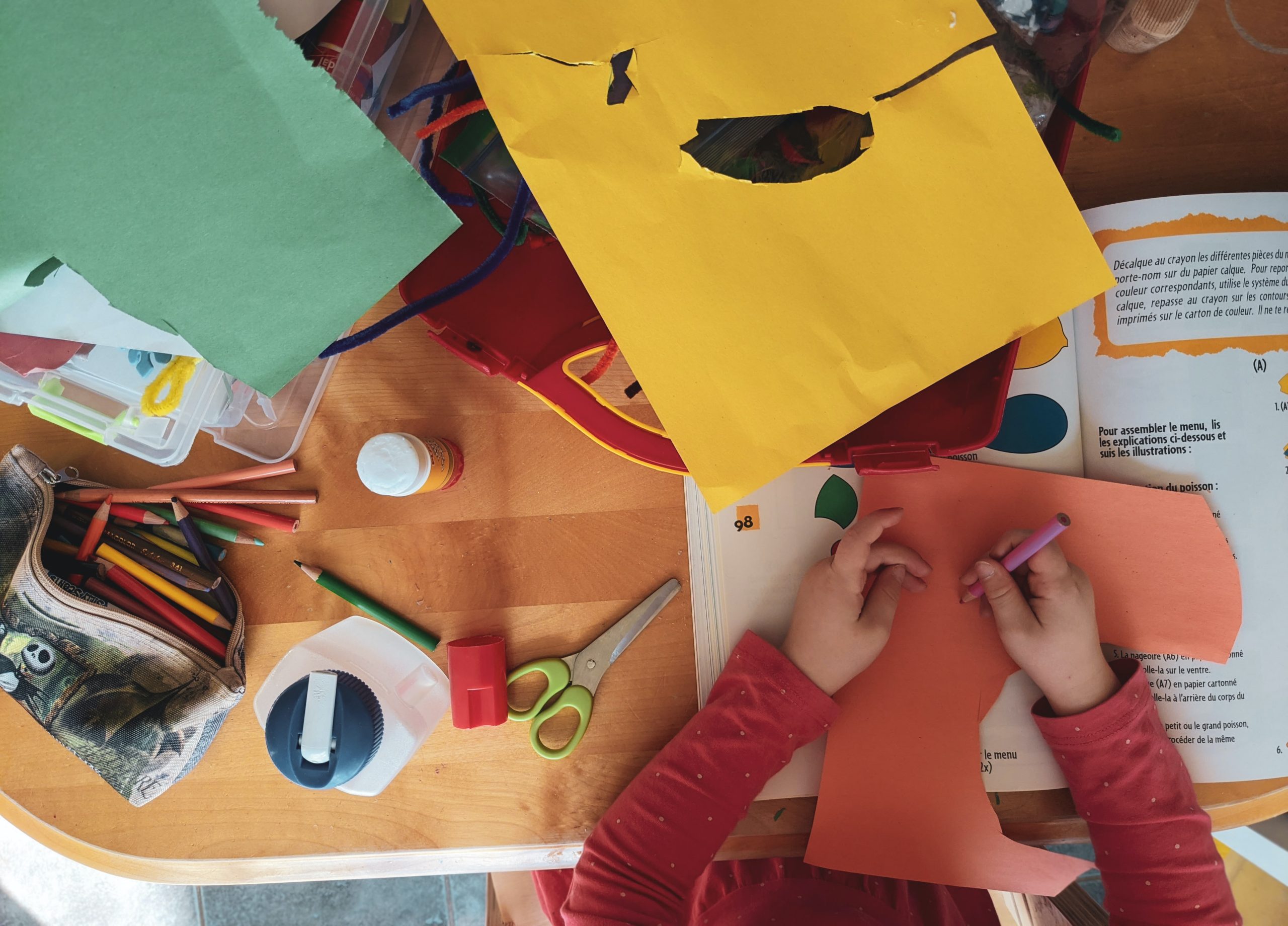We recently discussed the often-untapped magic of boredom, especially for children. We know that time for self-directed play increases emotional regulation, executive function, and physical literacy in children.
(read Part 1 here if you missed it)!
But if you are anything like me, you crave some practical application of all the evidence-based information out there about topics such as this.
I have compiled a few quick tips below to help us as parents foster the experience of boredom.
Remember that boredom, while temporarily uncomfortable, is not inherently negative
Boredom itself is not a bad thing. What if we chose to view it as an opportunity instead of a bother? It is an opportunity for your child to practice self-guided decision-making, emotional regulation, and creativity. What a joy! Well, your child may not see it that way—but you as a parent can help them by easing them into curing their own boredom without doing the work for them.
But firstly, is boredom really what your child is experiencing? Or could they be hungry, seeking connection, satiating curiosity about what you are doing, or experiencing another emotion that they are trying to avoid?
Modeling emotional language in your house and helping your children know how to recognize and voice emotions can help them (and you!) rule out something that could be going on other than boredom.
And if they really are hungry, give that child a snack! Better yet, have a stock of “mom-approved snacks” they can choose from at any time to build further autonomy and confidence in decision-making.
Before the boredom hits, prepare for it.
Consider making a list with your child of the things they most like to do (not including screen time). When they express boredom, direct them to the list. Remember to validate that they are capable of making fun and creative choices for themselves, and that you have every confidence that they can find something to do. Sometimes kids are so used to having their days structured by their teacher or other adults that boredom can feel overwhelming. Giving them the reigns to work through the boredom teaches them more skills than you simply creating a new activity for them each time they are bored.
https://pathways.org/independent-play/
Spend time playing with your child, and let them take the lead.
This will prepare your child to feel more confident in choosing their independent play activities in the future.
After all, your child should not be engaging in independent play all the time. Connection with YOU and other family members is still a vital part of their day and development. From a young age, take time to play with your child in a way in which they are able to “take the lead.” Join them in imaginary play. Let it be open-ended. The more actively and excitedly you join them in this pursuit, the more likely they are to approach independent play time with confidence in the future, because you have modeled for them that it is okay to play with imagination and freedom. They learn that playing without an adult-lead purpose is not only okay, but encouraged in your house.
Through these play times, you are silently communicating to your child that:
- You delight in them
- Their play is important
- They have good ideas and are imaginative
- They are capable and confident
Play therapy professionals who utilize CPRT (Child-Parent Relational Therapy), also known as Filial Therapy, suggest that as little as 30 minutes a week of this type of “special play time” with your child can make a significant difference in your relationship with them and their confidence in their own play.
If you would like to have more in-depth training in how to provide this kind of time with your child, what toys to have available, and how to best respond to them in a nurturing way during playtime, ask a play therapist for information about CPRT!
https://pcsintensive.com/wp-content/uploads/2020/03/Special-time-enough.pdf
https://cdn.ymaws.com/www.a4pt.org/resource/resmgr/telehealth/8_-_CPRT_Pages_from_Treatmen.pdf
How much Independent Play Time (IPT) is appropriate for my child, anyway?
The short answer to this question is that every child is different. It is also important to remember that “independent play” does not necessarily mean that your child is playing alone. In fact—babies and toddlers absolutely should NOT be left alone. Until a child is almost 2 years old, IPT time is still under supervision of an adult in the same room or sitting beside them depending on age. The time is “independent” because you are not leading the activity or guiding the play.
For example, my 9-month-old usually participates in some self-directed play time in her playpen in the mornings while I do some cleaning or fold laundry in the same room with her. Sometimes she is able to attend to herself for upwards of 20 minutes, and other times she seeks connection with me after 5 minutes. That connection could range from exchanging smiles with each other to me moving into the play area with her, to her needing snuggles or increased nearness. She is able to feel safe and connected while still learning to self-direct her play time in these ways.
This is a skill that can continue to be built upon as time goes on and her development continues.
Consider for yourself:
How old is your child?
How structured is their regular environment outside of home—is it difficult for them to “switch on and off” their ability to participate in self-directed activities?
Does your child have a diagnosis of anxiety, ADHD, or depression?
What is the birth order of your child in question (oldest, youngest, middle, etc)?
All of these factors are important to consider in regard to how much independent play time is appropriate for your child. BabyWise, one of many different parenting programs that has spent its own time in and out of the parenting spotlight, has some tips and guidelines for this topic. But with any guideline, remember that you are the one that knows your child best. It is okay to “follow your gut” and ease yourself and your child into IPT. It is also important to learn how to identify the fine line between boredom and emotional distress for your children, especially younger ones. Consistent, forced IPT when a child is seeking connection with a caregiver can be detrimental to attachment.
Remember that you can also provide some connection without structuring their play for them! No chart or recommendation should EVER be a replacement for your personal understanding of your child’s needs—even when you are helping them practice self-directed play.
https://babywise.life/blogs/momtalk/independent-play-time-how-to-get-started
https://www.babywisemom.com/independent-playtime-lengths/
Introduce Independent Play Time in small increments.
It is suggested that school-aged children have 1-2 hours of independent playtime per day (see links above). But for children who are not accustomed to it, this can feel like an eternity.
Begin by introducing IPT in small increments, and with a mind for developmental appropriateness. Even school-aged children may feel more comfortable with you nearby during their self-directed play to begin. Maybe you read a book on the back patio while they play in the yard. Some encouraging smiles, waves, or even light conversation from you can support them in their play without you structuring it for them.
It can also be helpful to offer IPT after a particularly structured activity to allow them freedom of movement, exploration, and activity. Directly after school is a fantastic option!
For children who thrive in structure, make IPT (Independent play time) part of the expected routine.
For a child with anxiety and/or ADHD, or who simply could feel overwhelmed by this new addition to their day, maybe make IPT the same time every day, or make sure everyone in the house has IPT at the same time (this gives parents a little break to complete some tasks, too!)
Always remember to remind your child that they are capable of self-direction, and that you believe in their ability to guide their own play. You can encourage them with phrases such as:
“I am confident that you can find something fun to do. I love your imagination and creativity!”
“I enjoy seeing you excited when you do the things you love!”
“It is hard to feel bored sometimes. I bet it won’t take you long to find something fun to do.”
“Let’s look at your list of fun things! You can choose one of these or think of a new one! I love your growing brain and imagination.”
Especially during school breaks and summer months, avoid over-planning your child’s free time.
Avoid too many structured activities for kids during summer months. Free play is vital for growing self-expression and developmental skills that are more difficult to foster during the structured weeks of the school year.
Some parents find themselves over-planning to save their children (or themselves) from their child’s boredom. Try to find a balance between a healthy, semi-structured routine with ample time for kids to explore their own interests, creativities, and environments.
Be careful not to overschedule your child’s boredom time (or IPT) for your own devices.
This is such an easy trap to fall into! IPT does not need to be the bulk of your day. While a developmentally appropriate amount of independent playtime is helpful for parents to complete some tasks, family, peer, community, and parent-child interactions are not to be cast by the wayside.
Get Outside!
Honestly, this is my most simple and favorite parenting tip of all time that I have received, and it is one of my weekly goals for my little girl. Even when the heat index is 110 here in Dallas (like it is today,) we try to find just a couple of minutes to go outside to water the hydrangeas, look for our friends Mr. Lizard or Mama Cardinal (and peek at her babies), or pick a ripe tomato to bring inside (that Dad grows; we just do the harvesting).
Other times, we find ways for IPT to be outside, like on a blanket or in a kiddie pool, and she is able to explore her natural environment with supervision.
Just these simple, tiny activities that take about a total of 3 minutes increase her language development, expose her to sunshine and fresh air that benefit her in several different physical ways, and lower future
predictions for mental health concerns. It also instills the idea that exploration and self-direction is encouraged in our home.
For a couple of blogs from our archive about the benefits of being outside for children and adults alike, read Wilderness Therapy and 1000 Hours of Wonder. I also recommend the following resources to help you and your children find ways to explore your own backyard (literally!).
Last Child in the Woods: book by Richard Louv
https://www.childrenandnature.org/
“Kids are born scientists. They’re born probing the natural world that surrounds them. They’ll lift up a rock. They’ll pick up a bug. They’ll pull petals off of a flower. They’ll ask you why the grass is green and the sky is blue, and they’ll experiment with breakable things inside your house. I think the best thing a parent can do, when raising a child, is simply get out of their way…Exploration can become a fundamental part of what a growing child requires to become a thinking member of society.”
Neil Degrasse Tyson




